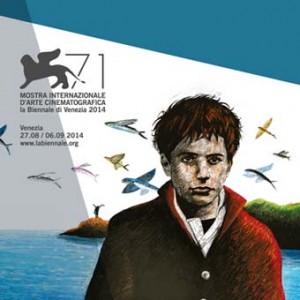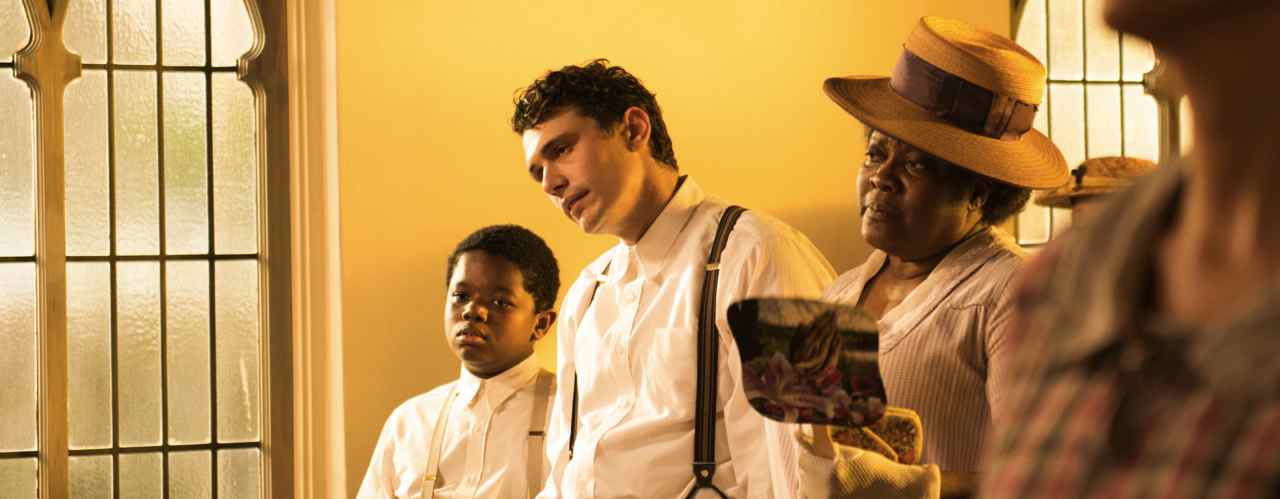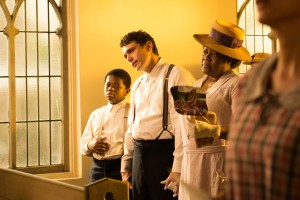La Writers Guild Italia è nata con il preciso intento di valorizzare e di far rispettare, sotto ogni aspetto, il lavoro professionale degli sceneggiatori e quindi anche la loro immagine pubblica. La sezione SCRITTO DA, sotto l’egida di WRITTEN BY, la prestigiosa rivista della WGAw, raccoglie e diffonde la voce degli sceneggiatori italiani, per tentare di supplire alla grande disattenzione con cui gli scrittori e le sceneggiature vengono penalizzati dalle comunicazioni dei festival e degli organi di informazione.

![]()
SCRITTORI A VENEZIA
Writers Guild Italia (WGI) incontra gli sceneggiatori italiani presenti con le loro opere alla 71° Mostra Internazionale d’Arte Cinematografica di Venezia (27 agosto-6 settembre)
Matt Rager ha scritto THE SOUND AND THE FURY, tratto dall’omonimo romanzo del 1929 di William Faulkner. Il film, è stato presentato oggi, 5 settembre, nella sezione Fuori Concorso, in occasione dell’assegnazione del premio Jaeger-LeCoultre Glory to the Filmaker 2014 al regista e interprete James Franco in Sala Grande.
The sound and the fury
written by… MATT RAGER
Scarica l’intervista in italiano: SCRITTORI A VENEZIA. Matt Rager
1. The Sound and the Fury is an adaptation of William Faulkner’s novel. Can you pitch your film to us?
Here goes: set in Mississippi at the turn of the 20th century, The Sound and the Fury portrays the decline and fall of the Compsons, a once proud, aristocratic Southern family, revealing the secrets and betrayals that have tarnished the family name and continue to haunt the Compson children. Told in distinct chapters, the film juxtaposes the unique perspectives of the three Compson brothers: mute, manchild Benjy; sensitive, melancholic Quentin; and cold, calculating Jason. Meanwhile, the fate of the lone Compson sister, Caddy, gradually unfolds across all three narratives. The Sound and the Fury spans three decades in the lives of the Compsons and offers, through this single family’s history, a meditation on the relationship between time, memory and history.
2. This is your second film, your second adaptation of a Faulkner’s novel, and your second collaboration with James Franco. How did it go this time? Was it you or Franco to come out with the project?
I think it went great – I had the opportunity to be very involved with the project, from the earliest stages through post-production. I was able to be on set for the duration of the shoot, which allowed me to consult on any mid-scene alterations to dialogue, etc., so that we could do our best to keep the language period-accurate, and also to make any necessary last-minute revisions. Not to mention that it was a great learning experience for me to be on set and see everything that goes into making a film production work.
3. Every time that I think of adapting a book into a screenplay, my mind goes to Charlie Kaufman and his crazy spectacular struggle (‘Adaptation’, 2002). ‘The Sound and the Fury’ is a complex novel, which employs several narrative styles, how did you translate it into the visual language of film? Did you encounter any obstacles in the process? What’s the core of your story — the main theme?
I absolutely love Adaptation and also think of it often when writing adaptations! As far as translating the narrative styles into the visual language: I tried to focus on differentiating between the contrasting ways that each character comes into contact with and experiences the outside world, and the way that each character relates to time and memory. For instance, Quentin’s section – in the novel, the vast majority of the prose is solely a representation of his interiority – the tumbling, overlapping stream of his mind. And yet, in terms of his engagement with the outside world in the narrative present, Quentin rarely speaks and is very self-restrained. So the challenge becomes how to both describe the stillness of his exterior self while representing the roiling turmoil that is going on inside, how to convey the idea of a young man who is unable to keep his inner mind, and the past, from spilling out into his experience of the present. Benjy, on the other hand, experiences everything in the present-tense – any memory can be triggered by the world around him, and once it is triggered it is re-experienced as if it were the present. The challenge there was how to convey this sense of disorientation without making it totally incomprehensible to a viewer/reader; how to give the viewer/reader enough markers and cues to help them navigate the jumbled chronology. My challenge as a writer was to figure out how to structure and convey those differences in a way that captures what makes the novel so compelling while also making it clear to the reader what the heck is going on! A modernist novel like Faulkner’s is meant to be read slowly, and re-read time and again, the nuance unfolding a little more with each reading – a film script, on the other hand, can’t count on that sort of patience!
4. James Franco is one of the most talented artists in the world. How was your cooperation? Do you think that a close collaboration between a writer and a director is essential to make a great film?
James and I have the good fortune of being friends and having worked together, in both creative and academic capacities, outside of these two projects, and so we were very comfortable working together. He isn’t controlling and is willing to delegate responsibility when it comes to these sorts of things – which gave me great freedom when working on the script. I know I’m biased, but to me the writer/director collaboration seems essential, especially for an adaptation of this complexity. Of course, I’ve been lucky that I haven’t done it any other way…so I guess I don’t have the perspective to say whether or not writer/director collaboration is essential, but I certainly prefer it that way!
5. Which are the strongest points of your screenplay?
Hmmm…that’s a really hard question for me to answer. I think you’d have to ask someone else to answer that!
6. Would you give us your favorite scene as a gift? What is it about?
My personal favorite is a flashback scene, where Jason, the youngest brother who is now the head of the family, meets his estranged sister, Caddy, after their father’s funeral. It’s a fun scene as a writer because it is all about two characters trying to remain stoic on the outside while their inner turmoil roils on the inside; also, it is a scene in which the two characters indirectly reference many of the things that they aren’t willing (or able) to say directly to each others’ faces. I don’t know if this was necessarily my favorite scene when I wrote it, but I think that Scott Haze’s and Ahna O’Reilly’s performances are impeccable.
If you want to read the scene, click here: The Sound and the Fury – Funeral Scene
7. Did you ever think of meeting some kind of target (read: audience) while writing your script?
I do. I know that sometimes the popular answer for writers is to deny thinking of the audience, to say they are solely committed to the story, but for me film and literature are fundamentally communicative mediums; that is, they are all about connecting with a reader or viewer and so one has to imagine, on some level, how that audience is going to respond. That doesn’t mean pandering to that audience or anything like, but just being aware of the imagined audience response throughout. For a film like this, it is something we thought about a lot when trying to find the balance between accessibility and difficulty. That is, we know it’s not going to be a mainstream movie, so there is more freedom to challenge the viewer, but we didn’t want it to be so opaque that it felt insular or off-putting. We wanted to be sure that someone who hasn’t read the novel would be able to engage with and understand the film.
8. How many changes to the script did you need to do while filming? Why?
There were many changes, mostly small, logistical things that sometimes cascaded into larger changes – for instance, anytime they are at the Compson home, the original script used the novel as a model for how they move through the house and around the property. We shot the film in an old mansion in Mississippi, which was great, but this meant that we had to rework scenes to work with the layout of the house and the grounds. This was particularly tricky in the Benjy section, as his flashbacks are all triggered by visual cues, but those visual cues sometimes needed to be changed based on what was available. Old Harvard and Cambridge in Quentin’s section, and the town of Jefferson in Jason’s section, presented similar logistical difficulties.
9. We created the Writers Guild Italia in order to defend the Italian writers because our profession is not much protected and recognized in Italy. We don’t have a national contract with the producers. We’re always forgotten in both festivals and press releases. Well, it would be a too long report to do in full. Anyway, what do you think about the work that the guilds do, especially in countries like Italy?
For full disclosure, I’m not actually in the Writer’s Guild here, yet, as both films were so small-budget that they didn’t qualify for WGA status. But I hope to be soon! And that said, I am a big believer in the writer’s guilds and think they are hugely important: for protecting the rights of writers, the power of collective bargaining, and for giving writers the necessary resources for their careers. The representation (and relative invisibility) of writers in film is a fascinating topic that I would love to talk more about, but it would take too long to do it justice here!
10. Are there any Italian films that you consider fundamental for your artistic development?
I’m not an expert in Italian film, by any means, but I, like so many others, was extremely influenced by Italian Neo-realism, particularly The Bicycle Thief and Umberto D.
11. What are you expecting from Venice?
Unfortunately, I wasn’t able to make it to the festival, but for happy reasons – I have a newborn daughter, so traveling at this time wasn’t feasible. But I am very sad to not be there, as I absolutely love the city of Venice. As for my hopes for the film…I’m just hoping that it is received well. I think it is a special film, and I hope it resonates with the audience.
12. Thank you very much, Matt! Congrats on your new baby girl!
Interviewer: David Bellini WGI Spokesperson in LA

